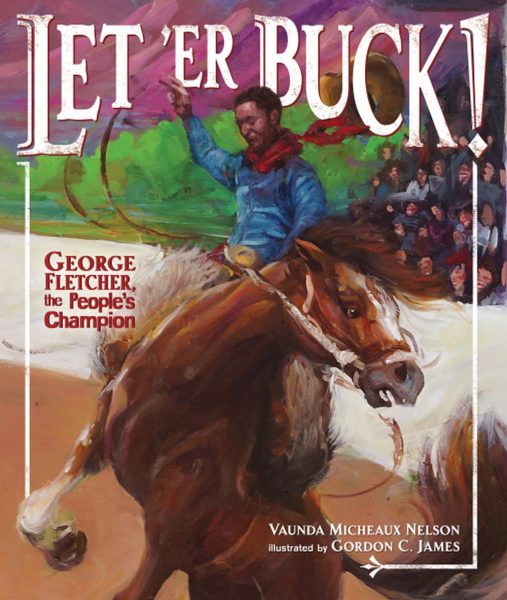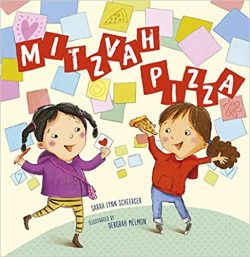BOOK DISCUSSION:
In our ongoing efforts to inform your thinking about multicultural picture books and book selection, the Diverse BookFinder now provides author/illustrator interviews on select book pages. We hope this is helpful for our users!
Author/Illustrator Bios:
 Chelsea Johnson came to feminism as an undergraduate at Spelman College, where she was introduced to the concept of intersectionality through writers like Anna Julia Cooper, Audre Lorde and Patricia Hill Collins. She went on to earn her Ph.D. in Sociology and Graduate Certificate in Gender Studies from the University of Southern California in 2019. Chelsea now works as a user experience researcher in the corporate world, using intersectionality to help designers and engineers create products with accessibility in mind.
Chelsea Johnson came to feminism as an undergraduate at Spelman College, where she was introduced to the concept of intersectionality through writers like Anna Julia Cooper, Audre Lorde and Patricia Hill Collins. She went on to earn her Ph.D. in Sociology and Graduate Certificate in Gender Studies from the University of Southern California in 2019. Chelsea now works as a user experience researcher in the corporate world, using intersectionality to help designers and engineers create products with accessibility in mind.
 LaToya Council was first introduced to the concept of intersectionality at Spelman College, which inspired her scholarship, activism, and vision for a more inclusive world. LaToya went on to earn her M.A. in Sociology at the University of Colorado, Colorado Springs and is currently finishing up her Ph.D. in Sociology at the University of Southern California. Her research theorizes how race, class, and gender shape work and family life.
LaToya Council was first introduced to the concept of intersectionality at Spelman College, which inspired her scholarship, activism, and vision for a more inclusive world. LaToya went on to earn her M.A. in Sociology at the University of Colorado, Colorado Springs and is currently finishing up her Ph.D. in Sociology at the University of Southern California. Her research theorizes how race, class, and gender shape work and family life.
 Carolyn Choi is a California native born and raised in Los Angeles. After graduating from UCLA, Carolyn worked in community organizing and advocacy for local immigrant rights groups in Los Angeles, where she devoted her time to the issues facing migrant women and women of color. Carolyn later earned her M.S. in Sociology and Criminology at the London School of Economics and Political Science and is now completing her Ph.D. in Sociology with a designated emphasis in Gender Studies at the University of Southern California. Her research focuses on youth, gender, education, and migration within the intra-Asian context.
Carolyn Choi is a California native born and raised in Los Angeles. After graduating from UCLA, Carolyn worked in community organizing and advocacy for local immigrant rights groups in Los Angeles, where she devoted her time to the issues facing migrant women and women of color. Carolyn later earned her M.S. in Sociology and Criminology at the London School of Economics and Political Science and is now completing her Ph.D. in Sociology with a designated emphasis in Gender Studies at the University of Southern California. Her research focuses on youth, gender, education, and migration within the intra-Asian context.
How would you describe this book’s contribution to the multicultural picture book world?
We are proud that the characters in IntersectionAllies: We Make Room for All represent many cultures, and that we show children heroines who are of color, poor, non-binary, and from the Global South. At the same time, we believe that multicultural representation alone is not enough. IntersectionAllies contributes to the picture book world by moving beyond symbolic portrayals of diversity to instructive portrayals of intersectional activism. A focus on the latter gives young readers the tools to advocate for themselves and others in the real world. After all, Dr. Kimberlé Crenshaw coined the term "intersectionality" to guide policymaking and social justice strategizing. Teaching children how to be allies with and for people from different backgrounds is our way of honoring Crenshaw’s intent to help communities “make room” for the most vulnerable among us.
What do you see as the mission of this book? Is it meeting its mission?
We wrote IntersectionAllies to be a bridge between academia and the general public. While most academic research is inaccessible without a university affiliation and loaded with difficult jargon, as scholars of color whose research projects rely on the generous participation of folks marginalized by race, class, gender, and citizenship status, we felt a moral imperative to make creative, relatable, and easily digestible versions of feminist thought. Writing for children is our way of pursuing that mission.
Conversations with readers suggest that we are meeting our goal. Youngsters and grandparents alike are using IntersectionAllies to unpack their personal experiences and observations with a more critical and empathic eye. We’ve met 10-year-olds who are enjoying a newfound pride in their bicultural experiences after reading about Gloria and Heejung, two 1.5 generation immigrant characters in our book. We’ve met readers who translate conversations for their caregivers who now have the concept of “language brokering” to discuss their responsibilities. We’ve also spoken with readers who can now see the connection between social structure (i.e., governments, family, religion, culture) and inequality because of IntersectionAllies. We will have truly realized our mission if our readers use these concepts to empower others.
Has this book (either through its creation or through its reading) changed how you see things? If so, how?
Creating IntersectionAllies taught us how to be better feminists. First, for us to envision the radically inclusive and affirming world we depict in the book, we had to revisit intersectionality’s originating Black feminist texts and explore transnational feminism, indigenous feminism, queer feminism, and third world feminism more deeply. During the revision stage, we also sought out feedback from every community represented in the book. The process of ensuring that each character rings true—from what they say to what they wear—helped us see beyond our personal experiences and expanded our perspectives.
Second, creating this book as a trio showed us what we stand to gain by writing beyond the "Ivory Tower." Scholarly research is typically done solo, so these last few years working as CLC Collective have been a welcome change. Working in sisterly partnership let us step outside of our individual disciplinary bubbles and explore one another’s theoretical worlds.
In sum, we learned that intersectional feminism at its best is collaborative—both in theory and in practice.
What should people know before reading this book? Or what might readers be curious about after reading this book?
We wrote IntersectionAllies for people who are just starting to become interested in things like feminism, social justice, activism, and allyship. We don’t assume any prior knowledge about these topics, and tried our best to give readers many resources to help them as they learn. The book opens with a foreword by Dr. Kimberlè Crenshaw, the scholar-activist who coined the term "intersectionality," to provide a bit of historical context behind the book. We also include a “Letter to Grown-Ups” by Professor Ange-Marie Hancock Alfaro, which offers practical support for teachers, parents, and other caregivers who read this book with children. Our hope is that readers will become curious about the scholarly research that inspired us to write IntersectionAllies. Interested folks can refer to our visual works cited at the end of the book, or visit CLC Collective’s website for a more complete reference list.
Are there any discussion questions, curriculum, videos, or other materials that would help readers engage with this book?
IntersectionAllies ends with detailed page-by-page discussion guide, meant to help readers unpack the themes behind each character vignette. The guide introduces and defines key concepts, like the difference between sex and gender and what it means to be an activist. Readers are invited to put their new knowledge to work by volunteering, considering their preferred personal pronoun(s), exploring their family migration histories, and researching a past or ongoing social movement.




